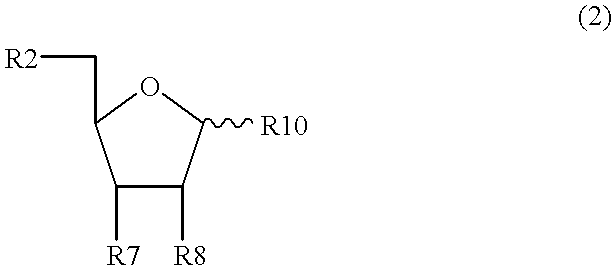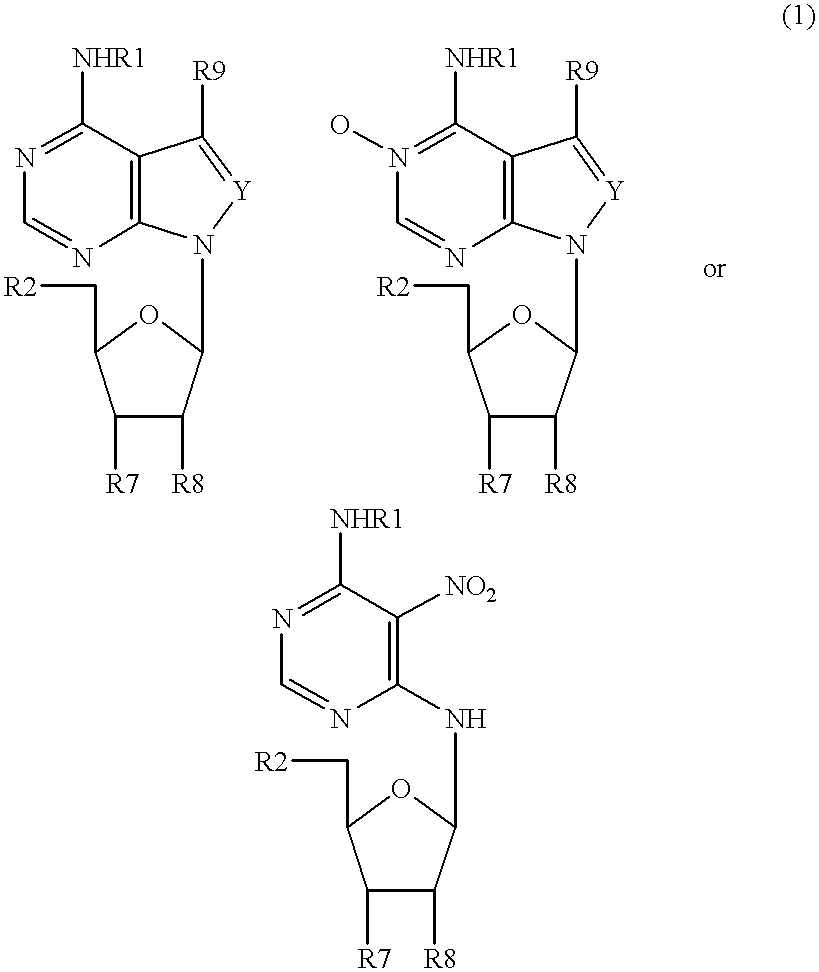Method for suppressing multiple drug resistance in cancer cells
a cancer cell and multiple drug technology, applied in the field of suppressing multiple drug resistance in cancer cells, can solve the problems of cancer cells that cannot overcome mdr sufficiently, the cancer cell from which the gene which encodes mtase protein has been deleted cannot metabolize mta to adenine, and the limitation of the efficacy of cancer chemotherapy
- Summary
- Abstract
- Description
- Claims
- Application Information
AI Technical Summary
Problems solved by technology
Method used
Image
Examples
example i
Suppression of MDR in Resistant Cells
MV522 is a human cancer cell line; MV522Q6 is a variant of the cell line with MDR. Each cell line was grown in a monolayer as and contacted with 10 .mu.M of a chemotherapeutic agent and / or L-alanosine (as shown in FIGS. 1A and 1B). Growth, or the lack thereof, was measured in each population of cells by reduction of a tetrazolium dye after three days in culture.
FIG. 1A is a graph depicting the effect of L-alanosine and different chemotherapeutic agents (vinblastine and taxol) on a MDR cancer cell line (MV522Q6). FIG. 1B is a graph depicting the effect of the same drugs on the cell line before acquisition of resistance (MV522). Comparing the two, the sensitivity of the resistant cell line to chemotherapy with vinblastine and taxol is greatly reduced. However, the adenine synthesis inhibitor L-alanosine is nearly 10 times as potent in the resistant cell line than the other agents tested.
For further confirmation of these results, two additional cell...
example ii
Protection of MTAse Competent Healthy Cells with MTAse Substrates
The selective inability of MTAse deficient NSCLC cells to proliferate in the presence of L-alanosine (at 40 .mu.M) despite the addition to each culture of the MTAse substrate methylthioadenosine(MTA) was confirmed in a comparison of two cell lines, MTAse competent Calu-6 and MTAse deficient H292 (FIG. 2). Control cultures containing adenine (tAde) proliferate despite L-alanosine, confirming that the selective toxicity is due to a failure of MTAse-deficient cells to metabolize MTA to adenine.
For further comparison, the addition of MTA or the MTA substrate analogue 5'-deoxyadenosine resulted in growth restoration only for MTAse competent A427 cells and MOLT-4 cells, whereas MTAse deficient A549 and CEM cells remained growth inhibited (FIGS. 3A and B). Because MTA is a feedback inhibitor of spermine synthetase, some cell lines such as MOLT-4 are inhibited by high concentrations. This results in a biphasic growth restorati...
example iii
Cloning and Partial Characterization of the MTAse Genomic Clone
A genomic clone of human MTAse was isolated as follows. A cosmid gene library constructed from human placenta DNA (Clontech) was screened using MTAse cDNA gene probe, the Not I / EcoRi fragment from subclone MTAP-7. Transformed E. coli cells from the library are plated on LB plates containing ampicillin (50 mg / l) with a colony density of 1-2.times.10.sup.4 / 135.times.15 mm plate.
The following procedures were performed. From half a million colonies, a single positive colony designated as MTAP-10 was isolated and partially characterized by PCR analysis and by direct sequencing. Two primers, a sense oligonucleotide located 120 bp upstream of the stop codon and an anti-sense oligonucleotide located 20 bp downstream of the stop codon were synthesized and used for PCR analysis. PCR was performed for 25 cycles, each cycle consisting of denaturation (92.degree. C., 1 min), annealing (55.degree. C., 2 min) and extension (72.degree....
PUM
| Property | Measurement | Unit |
|---|---|---|
| colony density | aaaaa | aaaaa |
| diameter | aaaaa | aaaaa |
| drug resistance | aaaaa | aaaaa |
Abstract
Description
Claims
Application Information
 Login to View More
Login to View More - R&D
- Intellectual Property
- Life Sciences
- Materials
- Tech Scout
- Unparalleled Data Quality
- Higher Quality Content
- 60% Fewer Hallucinations
Browse by: Latest US Patents, China's latest patents, Technical Efficacy Thesaurus, Application Domain, Technology Topic, Popular Technical Reports.
© 2025 PatSnap. All rights reserved.Legal|Privacy policy|Modern Slavery Act Transparency Statement|Sitemap|About US| Contact US: help@patsnap.com



